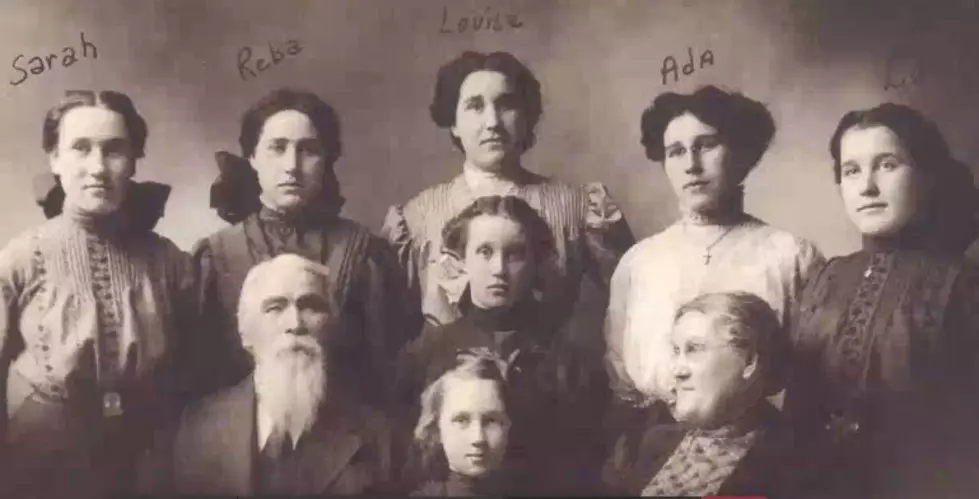
Missoula County moves to preserve 19th century ranch and LaLonde family story
Calling it a cultural treasure that highlights the evolution of the Missoula Valley, the county on Thursday took the first step in a plan to preserve and interpret the LaLonde Ranch and list it on the National Register of Historic Places.
The ranch dates back to the 1870s and tells a story of human settlement and the shifting prosperity of those who have called the valley home over thousands of years. Interpreting that history will take time, collaboration and funding.
But it won't happen overnight, nor should it, according to Loren Flynn, regional park manager for Montana Fish, Wildlife and Parks.
“One of the things I think is important to recognize, and something that's sometimes missed in our rush to preserve history, is that we don't recognize that history is happening now,” said Flynn. “Part of the story at these places can be how things have changed over time. It's been a continuum that continues today. It requires patience.”
The Salish and Kalispell peoples utilized the valley for thousands of years before the arrival of European settlers - something that's recognized before the Pledge of Allegiance at every county meeting. What once was an unmarred and open field tucked miles away from a booming downtown Missoula was settled by Adam LaLonde in 1870.
While “proving up” his land, LaLonde constructed a small log cabin on the property, which remains standing in its original location. The precise date of the adjoining brick ranch house is unknown, though historians believe it was built around 1888 using materials from the Hollenbeck Brickyard, once located two miles south of the ranch.
“This site demonstrates in pretty stark relief the progression of settlement and agricultural development in the Missoula Valley, from Adam LaLonde's fairly humble and small log cabin to the four square colonial revival house that's also on the property,” said Commissioner Dave Strohmaier. “It's a unique property here in the Missoula Valley.”
By the mid 20th century, the ranch had passed out of LaLonde ownership to Alvin Gooden and his family. The Goodens continued improving the property, adding new barns and other agricultural amenities.
The structures also adorn the property with rustic, mid-century appeal.
“This constellation of buildings and structures that really embody and tell the story of the agricultural progress in the Missoula Valley is easily accessible and arguably one of the more strategically placed public properties in the Missoula Valley,” Strohmaier said. “It has a great potential of being a portal to visitors to our community.”
The county inherited the property in 1991 and has struggled ever since to determine its future. It was approved last year for the Rolling Thunder Cyclocross Race and in 2017 was proposed as an orchard, kitchen, and food processing facility.
While uncertainty lingered around the historic property and its future, Missoula grew up around it. Interstate 90 now skirts along the north side of the ranch and a still-new industrial park surrounds it to the south with its car dealerships, gas stations, hotels and fabricating facilities.
While some historians say that the industrial surroundings detract from the ranch's history, they also acknowledge that it's such growth and development that further punctuates the evolution of Missoula and the role the ranch played in fueling that growth in its own day.
“There's a real opportunity to tell the story of our community's development and actually embrace that idea that it does sit in the middle of a development park, but also show it has changed over time and how Missoula County has grown and changed over time,” said Matt Lautzenheiser, executive director of the Historical Museum at Fort Missoula.
Fort Missoula was established by the U.S. Army in 1877 across the Missoula Valley from the LaLonde Ranch. On a clear day, it's likely that Mr. LaLonde could have seen the military camp's construction from the front porch of his home and the dust created by the cavalry's horses.
Lautzenheiser has penned the name “from homesteading to opportunity” when he thinks of interpreting the LaLonde Ranch.
“The real value for the interpretation of this site are the buildings,” he said. “On one small piece of property you can see a 10-by-10 cabin and then, just across the yard, there's this beautiful brick home. You can really trace the history of ranching in Missoula County and this family and their prosperity through these two structures. There's interesting ways we can interpret that history.”
Emy Scherrer, the city's historic preservation officer, described preservation as inherently local. Over the past three years, she said, Missoula has begun to appreciate its historical and cultural resources.
“It's up to us to protect and preserve our natural and cultural assets for the common good,” she said. “There's so much interest in that right now, and so much community backing. We have to have that vision, not just in 10 or 20 years, but in 50 years. We will not regret our decision to save something, but it's highly likely we'll regret our decision not to.”
